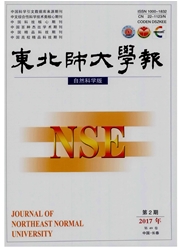

 中文摘要:
中文摘要:
在贝加尔针茅-羊草-杂类草草甸草原,按放牧退化程度,将草地划分为轻度退化区、中度退化区及重度退化区,采用样方法对3个样地内植物种类及植物地上现存量进行了测定,并计算了其草地基况得分和载畜量.结果表明,随着放牧强度的增加,植物地上现存量明显降低;以贝加尔针茅(Stipa baicalensis)和羊草(Leymus chinensis)为主的减少种的生物量呈递减趋势,以退化指示植物为主的增加种和侵入种呈递增趋势;轻度退化区、中度退化区及重度退化区草地基况等级分别处于良好、普通和低劣等级,平均载畜量(羊)分别为4.78,3.46,1.80只/(hm2.a).因此,应重新调整放牧家畜数量以达到草畜平衡,恢复草地生产力,从而促进草地畜牧业的可持续发展.
 英文摘要:
英文摘要:
The range site of Stipa baicalensis-Leymus chinensis forbs meadow,according to different degradation degree of grazing,can be classified as light,moderate and heavy degradation areas.The score of rangeland condition and stocking capacity was calculated,while the plant species and plant biomass were measured with sample method in 3 zones.Results show that,with the increasing of grazing intensity,vegetation biomass was decreased evidently.Biomass ration of the Stipa baicalensis and Leymus chinensis which were the main decreaser decreased progressively.The increaser and invader mainly composed by indicator plant showed increased tendency.The rangeland condition of light,moderate and heavy degradation areas were in good,ordinary and poor grade.The total stocking capacity in one year was 4.78,3.46,1.80(head/(hm2·a))respectively,so the number of grazing livestock should be re-adjusted as to reach the balance between grass and stock,restore the productivity of grassland and contribute to the sustainable development of grassland resources and animal husbandry.
 同期刊论文项目
同期刊论文项目
 同项目期刊论文
同项目期刊论文
 期刊信息
期刊信息
